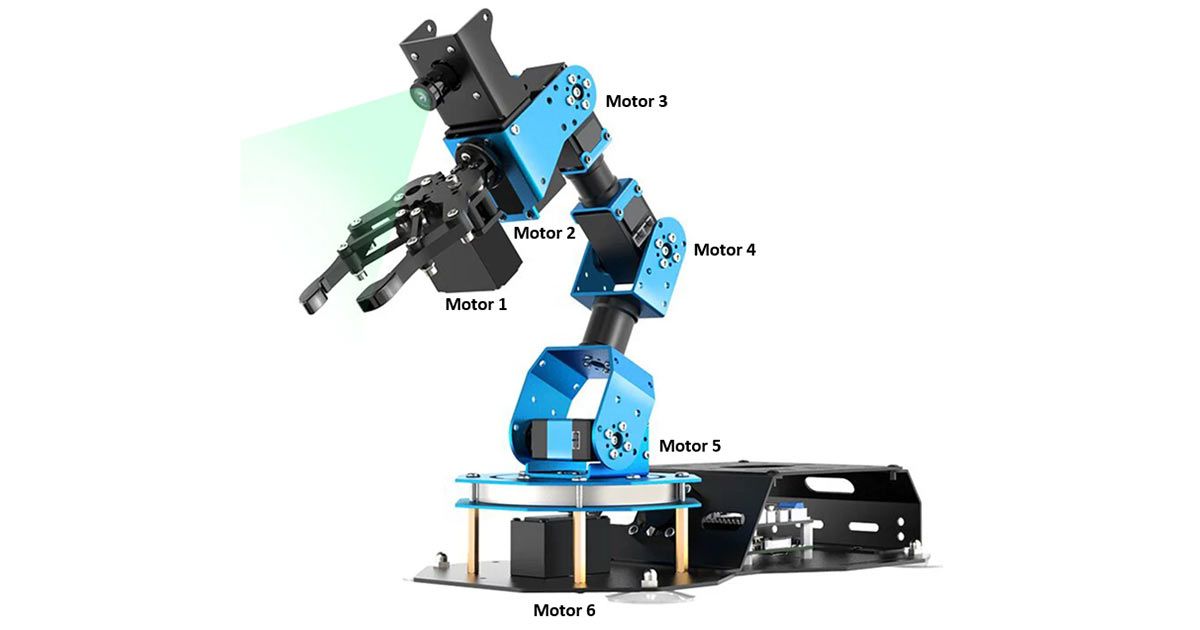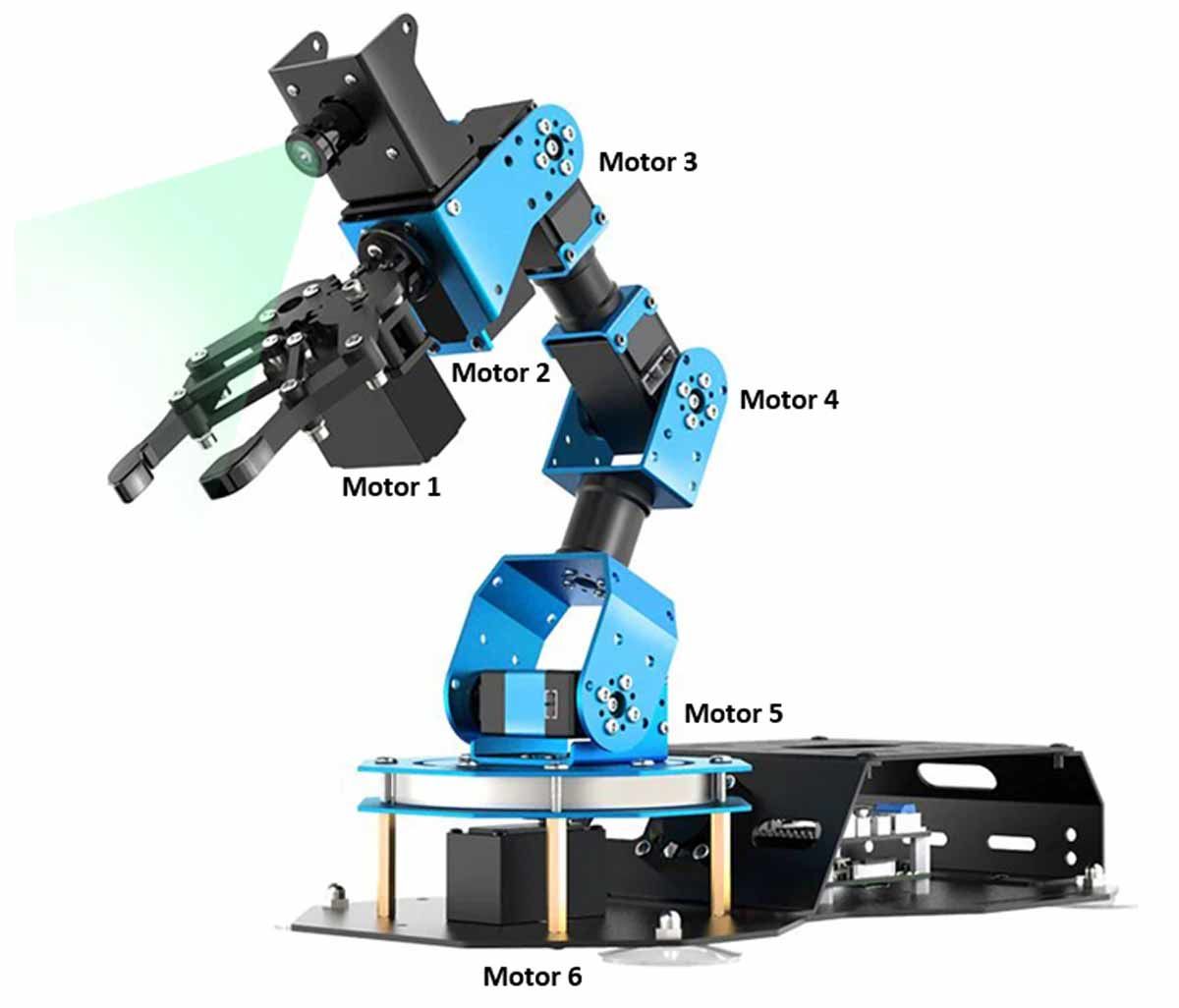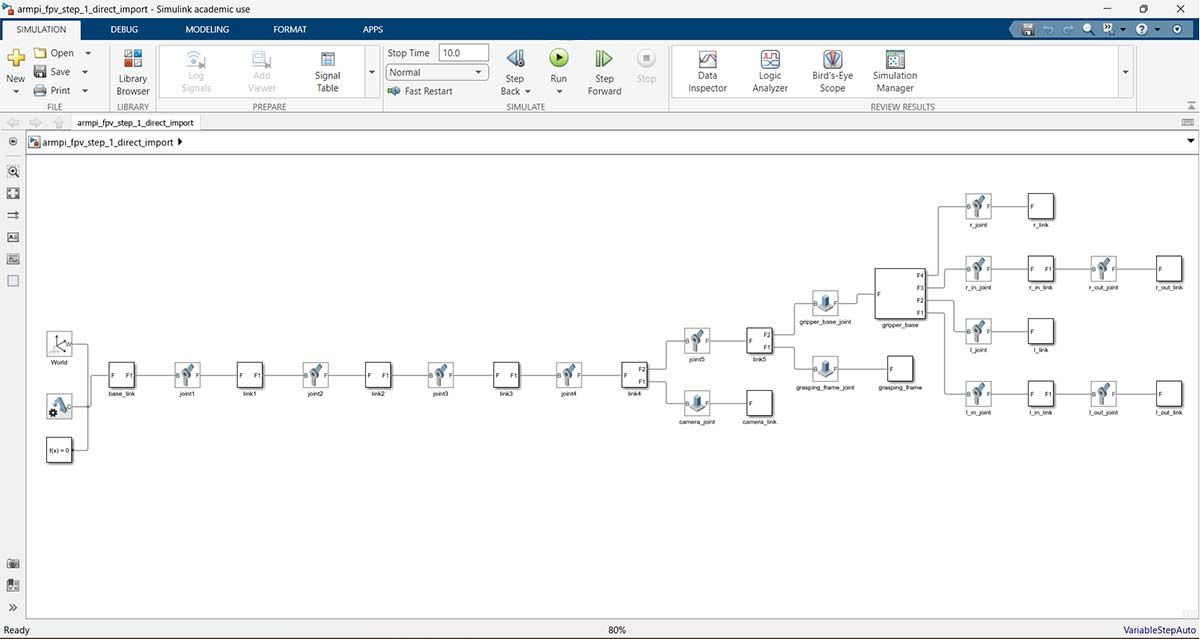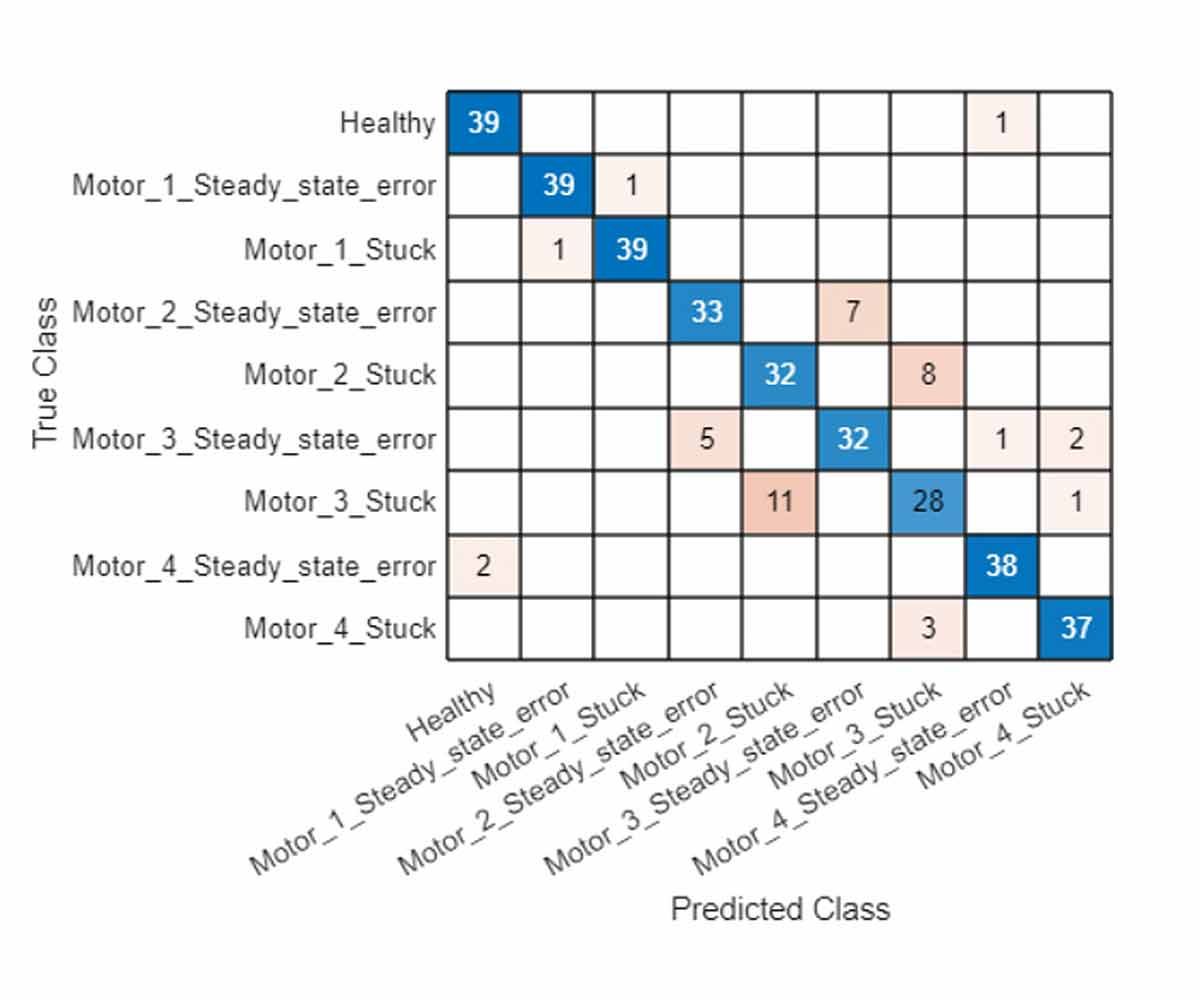Advancing Robot Predictive Maintenance for Industry 4.0
Digital Twins and AI Bridge the Gap Between Simulation and Reality
Manufacturing facilities face a persistent challenge: Maintenance schedules typically follow rigid timelines—check this part every three months, replace that component every six, regardless of actual wear and tear. The result is inefficiency on both ends—unnecessary downtime for unneeded inspections and replacements, and failures that occur before a component is scheduled for maintenance.
“Digital twins are quite useful for fault diagnosis. We can connect them to data from the real machines and then use that data to improve the model.”
At CentraleSupélec–Université Paris-Saclay, Professor Zhiguo Zeng and his team are tackling this problem through an innovative approach that combines digital twin technology with deep learning. Their goal is to detect component-level failures in robotic systems using only system-level monitoring data, without the need to place sensors on every critical part.
“Maintenance is a very big issue for a factory,” says Zeng. “If you know when your machine needs maintenance in advance, you can schedule the repair during a season with fewer orders, minimizing lost productivity.”
Though Zeng has extensive experience in reliability engineering and lifetime prediction, digital twin technology represented a shift from his previous work. When he joined the cross-disciplinary action “Industry of the future,” led by Professors Anne Barros and Pedro Rodriguez-Ayerbe at CentraleSupélec, he realized how digital twins could connect powerful simulation tools directly to physical systems in real time.
“Digital twins are quite useful for fault diagnosis. We can connect them to data from the real machines and then use that data to improve the model,” says Zeng.
With applications expanding across manufacturing, automotive, aerospace, and other sectors, digital twins are one of the most promising technologies in Industry 4.0. Organizations gain unprecedented visibility into operations and maintenance needs by creating virtual replicas of physical objects or systems.
Digital twins also offer a solution to one of the most challenging aspects of developing predictive maintenance systems—the scarcity of failure data. “In reality, we don’t see failure happen very often,” says Zeng. “Now, we create that kind of data by simulating a failure.”
Bridging Virtual and Physical
Working on digital twin projects provides implementation options with varying levels of integration between physical and virtual systems. Zeng’s team worked with three distinct levels of digital representation. At the basic level, a digital model functions like a conventional simulation, running offline with static models that don’t exchange data with physical systems. One level up is the digital shadow, where the virtual model takes data from the physical system to mirror its behavior, but doesn’t control it. The most advanced implementation is a true digital twin with bidirectional flow of data and information. Here, the model updates itself based on observations and makes real-time decisions that control the physical system.
The team selected an ArmPi FPV educational robot as their test. This robot comprises five joints and an end effector (claw), controlled by six servo motors. Creating a digital twin that was accurate enough to serve as the foundation for fault diagnosis was challenging.
The team also needed to address the limitations of traditional monitoring approaches. “In most industrial cases, to diagnose a bearing, you need sensors at the bearing level,” says Zeng. “This isn’t easy. Imagine a big machine with a bearing inside. You would have to dismantle the machine to install sensors. Sometimes, there isn’t enough space.”
Their approach uses system-level data (the movement trajectory of a robot’s end effector) to diagnose component-level failures (issues with individual motors). It relies on the digital twin to bridge the gap between what can be observed and what needs to be detected. The team constructed their digital twin using Simulink® and Simscape Multibody™, creating a hierarchical model representing both component and system-level behaviors.
“Everything starts by designing a simulation model,” says Zeng. “Simulink is very powerful if you want to model dynamic systems and their controllers.”
They used Simulink to model both the motor controllers as PID controllers with experimentally tuned gains. They leveraged visualization capabilities in Simulink, creating interfaces to link simulation data with physical robot readings for real-time monitoring.
ROS Toolbox proved invaluable for connecting to the robot hardware. “If you want to use a Robot Operating System (ROS), you typically set up the ROS and a Python® environment and must handle everything yourself,” says Zeng. “With ROS Toolbox, it’s managed automatically, saving significant effort.”
The team explored two approaches to preparing data for their AI model, initially using raw measurements: the commands sent to motors and the resulting movement patterns of the robot’s gripper. Next, they leveraged the digital twin as part of the data preparation. Using the simulation to predict how the robot should move with each command, they could measure the difference between expected and actual movements—these differences proved especially valuable for detecting subtle failures.
The team trained a long short-term memory (LSTM) neural network using Deep Learning Toolbox™ to identify patterns indicative of specific failures. The model architecture included two LSTM layers with 100 hidden units each, a dropout layer between them, and a fully connected classification layer.
The team designed a graphical user interface using MATLAB® App Designer to collect real-time data, including each motor’s position, voltage, and temperature. The interface allowed them to monitor the robot’s condition and validate the predictions of their fault diagnosis models.
With these integrated tools working together seamlessly, the team could focus on solving the technical challenges rather than wrestling with software compatibility issues. “Everything is very efficient,” says Zeng.
The Reality Gap Challenge
When the team tested the trained model on the real robot, it encountered what researchers call the “reality gap”—the discrepancy between simulation and the real world. While the fault diagnosis model achieved 98% accuracy in simulation, correctly identifying both the location and type of motor failures, its performance dropped to around 60% when tested on the physical robot.
The team improved real-world accuracy to around 85%—a significant advancement toward practical implementation.
“We are analyzing why the simulation doesn’t match reality,” says Zeng. “In the real world, it’s never perfect. There’s something you won’t consider in the simulation.”
Zeng and his team identified several factors contributing to this performance gap, including communication reliability issues, motor noise not accounted for in simulation, and synchronization problems between control commands and monitoring activities.
Animation of the robot arm in a steady-state error, as well as a relevant confusion matrix. (Video and image credit: CentraleSupélec)
These challenges reflect a broader issue in digital twin applications: Reality is messier than even the most sophisticated simulations. Rather than being discouraged, the team developed methods to address this gap, including adding a module to their digital twin that simulates real-world noise patterns and applying domain adaptation techniques in transfer learning.
“If you’re developing a digital twin model, even though we do calibration tests, these are still performed in controlled environments,” says Zeng. “But the data is much noisier when you deploy your model in industrial cases. How to compensate for noisy reality from an algorithmic perspective is a challenging research direction.”
Through these modifications, the team improved real-world accuracy to around 85%—a significant advancement toward practical implementation.
From Small Scale to Smart Factory
The team’s work extends beyond a single robot. They’re developing a small-scale smart factory environment where multiple robots work collaboratively on a production line, allowing them to test fault diagnosis algorithms in more realistic settings.
“We are trying to establish a mini smart factory,” says Zeng. “We’re creating a production line environment where we can deploy our algorithm on the robot to test if it can be integrated into production scheduling.”
This approach has educational benefits as well. Engineering students at CentraleSupélec get hands-on experience with digital twin technology, robotics, and machine learning through courses and projects.
“When students start from scratch and design this model in the virtual space, then gradually connect it to the robot, you can see they are enjoying this process,” says Zeng.
The practical applications of this research extend to manufacturing, warehousing, and other industrial environments. In smart warehouses, for example, robots follow predefined routes but must adapt when obstacles appear.
“When students start from scratch and design this model in the virtual space, then gradually connect it to the robot, you can see they are enjoying this process.”
“In a smart warehouse, robots follow predefined rules, but there could be cases—for example, a package dropped, blocking the path—where you need to redirect and reprogram routes,” says Zeng. “You need a digital twin system because you need to know the real-time position of each robot to coordinate them.”
The team is exploring additional applications, including fault-tolerant control, like adapting a robot’s movement when a component fails. The researchers are also developing health-aware control, where the degradation levels and remaining useful life of each motor are also considered in the trajectory optimization model, rather than just considering the energy consumption.
Their code, models, and data sets are freely available in GitHub® repositories, inviting fellow researchers to build upon their work. The goal is better fault diagnosis systems, no matter where the improvements originate. “If you discover something we can improve, just let me know,” says Zeng. “I will be happy to see someone achieve better results than us.”
For Zeng, whose parents worked as engineers in China’s manufacturing sector, this research represents more than an academic exercise—it’s a personal mission to improve working conditions in industrial settings.
“When I was young, I saw how hard it was to work in the manufacturing sector,” says Zeng. “My vision is to replace this kind of human labor with robots so that people can enjoy a better life.”
This vision has been shaped and supported by many dedicated collaborators. Zeng extends heartfelt thanks to the Chair on Risk and Resilience of Complex Systems and the French Research Council for their invaluable financial backing. This research began as a “pole project” in CentraleSupélec’s engineering curriculum, under the management of Professors Jean-Philippe Poli and Wassila Ouerdane, to whom Zeng expresses his gratitude. He also acknowledges the significant contributions of his talented students: Zhenling Chen, Zhuoxuan Cao, Achraf El Messaoudi, Wenxuan Hu, Haobo Li, Peilin Li, Killian Mc Court, and Xavier Mc Court.
Zeng warmly invites collaborations from academia, industry, and beyond to join in advancing this mission. “Together, let’s make a more reliable world.”
Read Other Stories
AI / CONTROL SYSTEMS
Designing Smarter Electrical Equipment Embedded with AI
Combining Model-Based Design with AI in Electrical Systems Improves Industry Operations
AUTOMATED DRIVING / ROBOTICS
Applying Proven Robotics Techniques to Automobile Development Processes
Renault Advances ADAS Prototyping with ROS Toolbox and Simulink Integration
AI / CONTROL SYSTEMS
HL Mando Develops AI-Driven Predictive Maintenance Platform for Testing Automotive Components
Digital Twins Accelerate Component Testing While Reducing Costs



